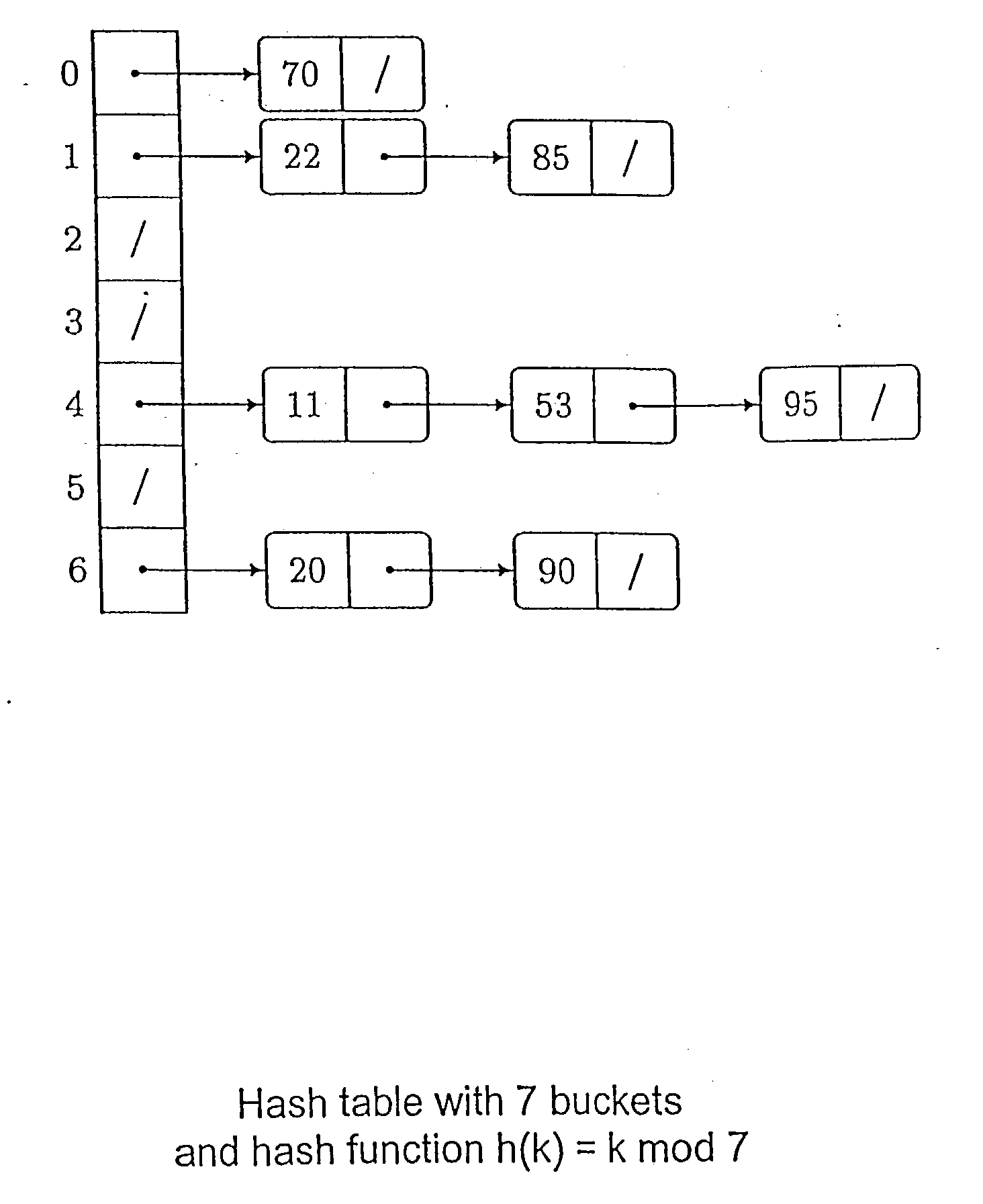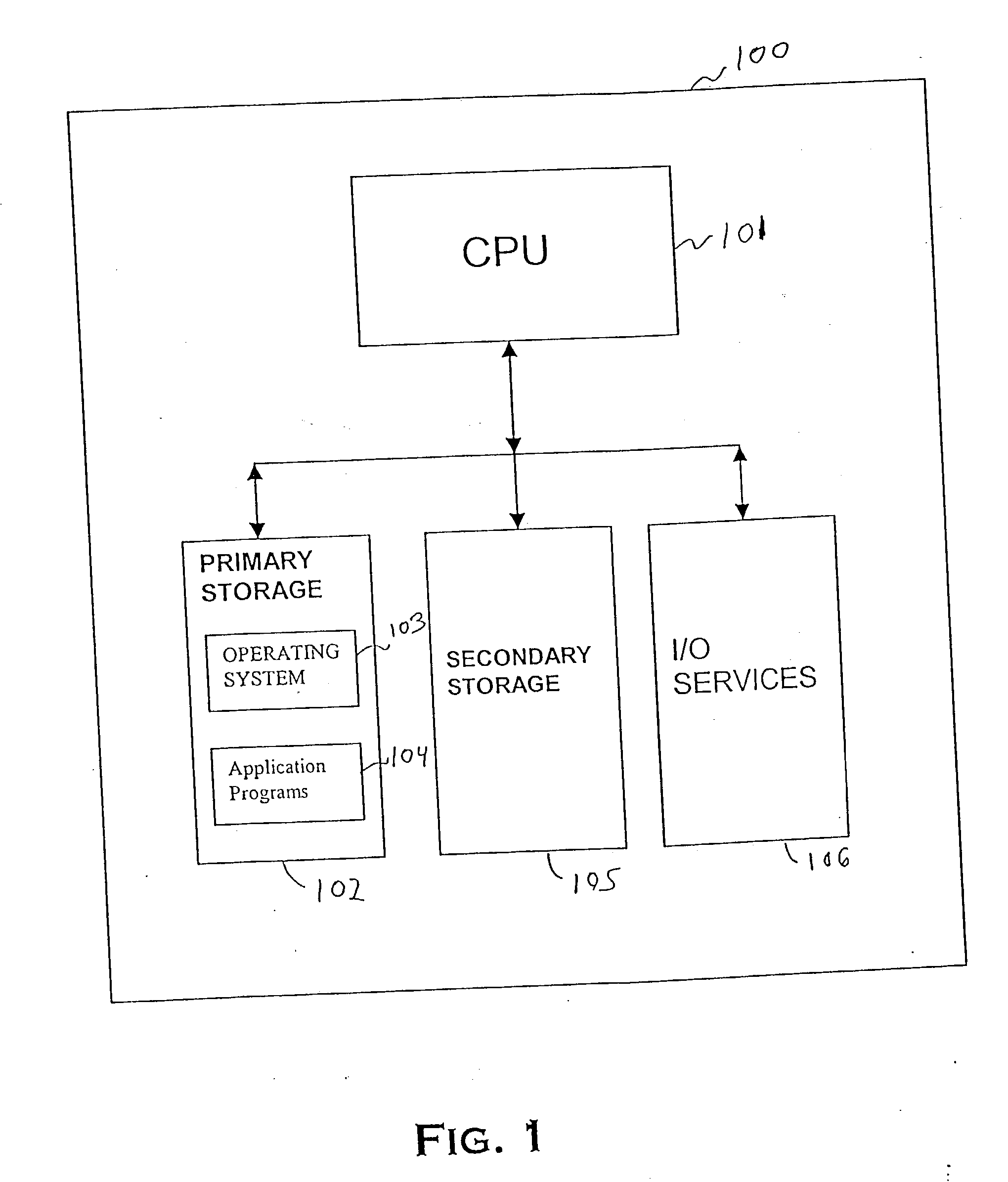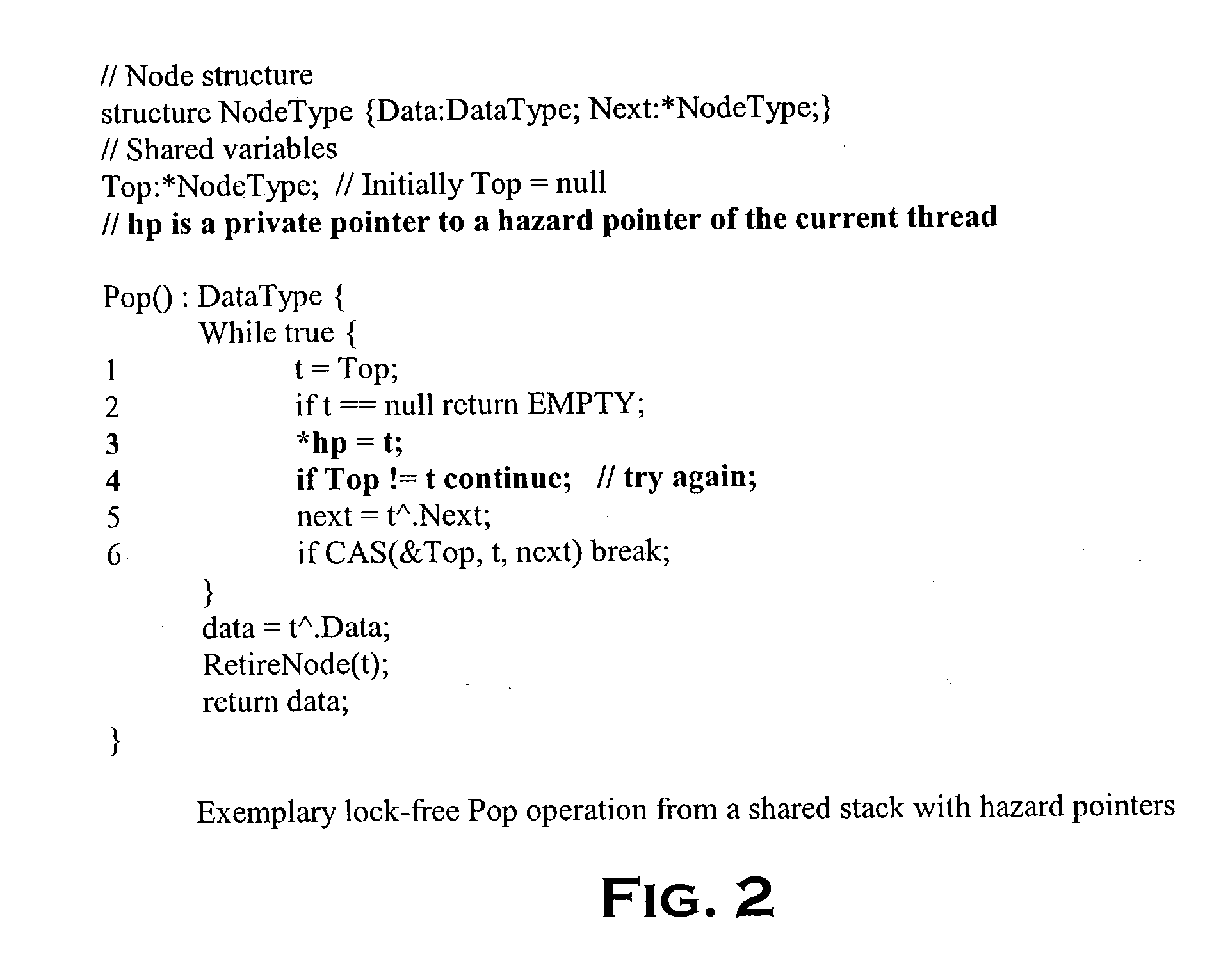Method for efficient implementation of dynamic lock-free data structures with safe memory reclamation
a dynamic lock-free data and memory reclamation technology, applied in the field of memory management, can solve the problems of affecting the safe reclamation of memory occupied by removed nodes, and affecting the safety of the operation of the memory reclamation method,
- Summary
- Abstract
- Description
- Claims
- Application Information
AI Technical Summary
Problems solved by technology
Method used
Image
Examples
Embodiment Construction
[0026] It is to be understood that the present invention may be implemented in various forms of hardware, software, firmware, special purpose processors, or a combination thereof. Preferably, the present invention is implemented as software. The program may be uploaded to, and executed by, a machine comprising any suitable architecture.
[0027] FIG. 1 is a block diagram of a computer processing system 100 to which the present invention may be applied according to an embodiment of the present invention. The system 100 includes at least one central processing unit ("CPU"), such as CPU 101, a primary storage 102, a secondary storage 105, and input / output ("I / O") devices 106. An operating system 103 and application programs 104 are initially stored in the secondary storage 105 and loaded to the primary storage 102 for execution by the CPU 101. A program, such as an application program 104, that has been loaded into the primary storage 102 and prepared for execution by the CPU 101 is calle...
PUM
 Login to View More
Login to View More Abstract
Description
Claims
Application Information
 Login to View More
Login to View More - R&D
- Intellectual Property
- Life Sciences
- Materials
- Tech Scout
- Unparalleled Data Quality
- Higher Quality Content
- 60% Fewer Hallucinations
Browse by: Latest US Patents, China's latest patents, Technical Efficacy Thesaurus, Application Domain, Technology Topic, Popular Technical Reports.
© 2025 PatSnap. All rights reserved.Legal|Privacy policy|Modern Slavery Act Transparency Statement|Sitemap|About US| Contact US: help@patsnap.com



